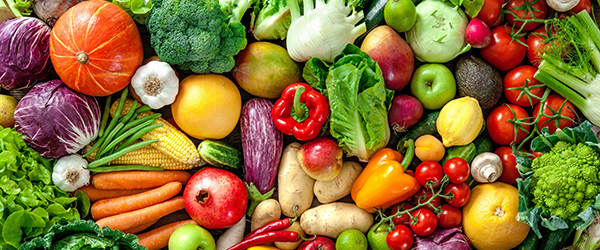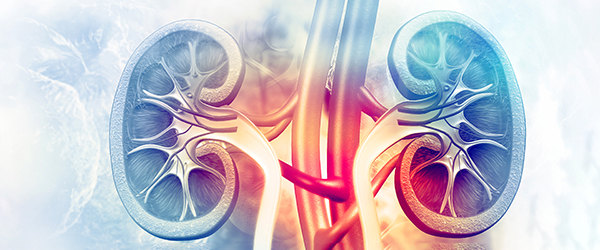Retinol-Binding Protein (RBP)
Quantitative determination of Retinol-Binding Protein (RBP) levels in serum and plasma using turbidimetric technology
Gentian Retinol-Binding Protein (RBP) Immunoassay
The Gentian Retinol-Binding Protein Immunoassay is a quantitative immunoassay for detection of Retinol-Binding Protein (RBP or RBP4) in human serum and plasma. RBP is a transport protein for retinol (derivate of vitamin A) in blood. RBP is synthesised and stored in the liver before binding to one retinol and one prealbumin (transthyretin (TTR)) to stabilise the complex and avoid renal filtration. Retinol-free RBP in the circulation is filtrated by the kidney and almost completely reabsorbed by the proximal renal tubule.1-4 The concentration of RBP in blood remains mostly constant in healthy individuals, though the levels can be altered in many conditions and disorders such as vitamin A deficiency, undernutrition, diabetes and renal dysfunction.
Gentian Retinol-Binding Protein Immunoassay is a turbidimetric assay that is rapidly performed in only 10 minutes. The assay is instrument independent and can be applied on a wide range of automated clinical chemistry analysers. It is CE-marked, UKCA-marked and FDA Exempt.

RBP and vitamin A
Main storage site of vitamin A is the liver. For mobilisation, the vitamin A derivative retinol is bound to the carrier protein RBP, secreted into blood and transported throughout the body. In cases of vitamin A deficiency, the liver will not store sufficient amounts of vitamin A to ensure the constant level of the RBP-retinol complex in blood. Vitamin A deficiency (VAD) is therefore reflected by reduced levels of the surrogate marker RBP, making the assay useful in the assessment of vitamin A status.3, 5
RBP and undernutrition
RBP is a low molecular weight protein and therefore responds to both protein and calorie restriction and can reflect the individual’s protein- and nutritional status. Studies have shown an inverse association between RBP levels and the severity of malnutrition and RBP can therefore be used as an aid in determining undernutrition.6-8


RBP and diabetes
An association between RBP and insulin resistance and diabetes has been identified.2 In type 2 diabetes (T2D) and gestational diabetes RBP levels are elevated, correlated with the magnitude of insulin resistance and is associated with several comorbidities of T2D.9-12 Measurements of serum RBP can therefore serve as a non-invasive and accessible method for assessing the risk of diabetes.
RBP and renal dysfunction
RBP is filtered in the glomerulus of the kidney, reabsorbed, and catabolised by the proximal tubules.2 In patients with reduced glomerular filtration rate (GFR) the levels of RBP will accumulate in blood.13,14 Hence, an increase in serum and plasma levels of RBP may reflect renal dysfunction.15,16

Technical details
| Assay Performance | |
|---|---|
| Sample type | Fresh plasma and serum |
| Assay type | Turbidimetric assay |
| Format | Liquid reagents, ready to use |
| Precision (sample >1 mg/L)* | Total CV <5% |
| LoQ* | 7.8 mg/L* |
| Security zone* | Up to 600 mg/L |
| Measuring range** | 7.8-139 mg/L |
* Instrument specific ** Lot- and instrument specific
The method has been standardised with a benchmark method traceable to the international standard.
For more details on Retinol-Binding Protein (RBP) products and prices please contact us at marketing@gentian.com
Gentian Retinol-Binding Protein Immunoassay is an instrument-independent turbidimetric assay. Our instrument validation team can assist with establishing applications on clinical chemistry instruments of interest. The assay is CE-marked and FDA 510(k) Exempt.
For more details on Retinol-Binding Protein (RBP) products and prices please contact us at marketing@gentian.com
| Product no. | Product | Content |
|---|---|---|
| 11001 | Gentian Retinol-Binding Protein Reagent Kit | R1: 40 mL R2: 13 mL |
| 11002 | Gentian Retinol-Binding Protein Reagent Kit S | R1: 20 mL R2: 6 mL |
| 11020 | Gentian Retinol-Binding Protein Control Low | 2 mL |
| 11021 | Gentian Retinol-Binding Protein Control Medium | 2 mL |
| 11022 | Gentian Retinol-Binding Protein Control High | 2 mL |
| 11051 | Gentian Retinol-Binding Protein Calibrator Kit | 5 x 1 mL |
For more details on Retinol-Binding Protein (RBP) products and prices please contact us at marketing@gentian.com

Turbidimetric test

Faster throughput

Open channel

10 minutes to result
.png)
Cost efficient
Contact us for further information
Gentian Retinol-Binding Protein Immunoassay is a turbidimetric assay that is rapidly performed in only 10 minutes. The assay is instrument independent and can be applied on a wide range of automated clinical chemistry analysers. It is CE-marked, UKCA-marked and FDA Exempt.
Explore RBP in your laboratory - fill out the form or send an email to marketing@gentian.com for more information about the product and prices.
Frequently asked questions
What is the assay principle for Retinol-Binding Protein (RBP)?
Is Gentian Retinol-Binding Protein (RBP) an open channel turbidimetric assay?
Retinol-Binding Protein (RBP) is an open channel assay, meaning it can be added to all clinical chemistry analysers. Diagnostic laboratories are thereby not limited to the use of one specific instrument offering Retinol-Binding Protein (RBP) but can apply the assay on their available instrumentation and thereby fill the open menu gaps.
Our instrument validation team can assist with establishing applications on clinical chemistry analysers of interest.
Which clinical chemistry analysers can Retinol-Binding Protein (RBP) be applied on?
Retinol-Binding Protein (RBP) can be applied on a wide range of clinical chemistry analysers.
What is retinol?
What is RBP?
What is apo-RBP?
What is holo-RBP?
What is prealbumin?
What is STRA6?
References:
- Kanai M et al. Retinol-binding protein: the transport protein for vitamin A in human plasma. J Clin Invest, 1968
- Steinhoff JS et al. Retinoid Homeostasis and Beyond: How Retinol Binding Protein 4 Contributes to Health and Disease. Nutrients, 2022
- Tanumihardjo SA et al. Biomarkers of Nutrition for Development (BOND)-Vitamin A Review. J Nutr, 2016
- Steinhoff JS et al. Biological Functions of RBP4 and Its Relevance for Human Diseases. Front Physiol, 2021
- de Pee S et al. Biochemical indicators of vitamin A deficiency: serum retinol and serum retinol binding protein. J Nutr, 2002
- Sergi G et al. Role of visceral proteins in detecting malnutrition in the elderly. Eur J Clin Nutr, 2006
- Smith FR et al. Plasma vitamin A, retinol-binding protein and prealbumin concentrations in protein-calorie malnutrition. III. Response to varying dietary treatments. Am J Clin Nutr, 1975
- Pisprasert V et al. Moderately high-protein enteral formula improved retinol-binding protein in tube-fed patients: A multicentre open study. Nutr Health, 2017
- Nono Nankam PA et al. Retinol-binding protein 4 in obesity and metabolic dysfunctions. Mol Cell Endocrinol, 2021
- Mousavi SN et al. Association of Leptin and Retinol Binding Protein 4 with the Risk of Gestational Diabetes: A Systematic Review and Meta-Analysis of Observational Studies. Indian J Endocrinol Metab, 2023
- Flores-Cortez YA et al. Interplay of retinol binding protein 4 with obesity and associated chronic alterations (Review). Mol Med Rep, 2022
- Olsen T et al. Retinol, Retinoic Acid, and Retinol-Binding Protein 4 are Differentially Associated with Cardiovascular Disease, Type 2 Diabetes, and Obesity: An Overview of Human Studies. Adv Nutr, 2020
- Zhang WX et al. Decreased retinol-binding protein 4 in the sera of patients with end-stage renal disease after kidney transplantation. Genet Mol Res, 2014
- Xun C et al. Circulating RBP4 Increase and Its Diagnosis of Chronic Kidney Disease. Ann Clin Lab Sci, 2018
- Zhang L et al. The Role of Circulating RBP4 in the Type 2 Diabetes Patients with Kidney Diseases: A Systematic Review and Meta-Analysis. Dis Markers, 2020
- Ye Z et al. Correlation and Diagnostic Value of Serum Cys-C, RBP4, and NGAL with the Condition of Patients with Traumatic Acute Kidney Injury. Evid Based Complement Alternat Med, 2021
This website may contain information about products that are not registered for use in your country of residence and may not comply with applicable laws or regulations in that country. We do not take any responsibility for accessing such information in those circumstances.
